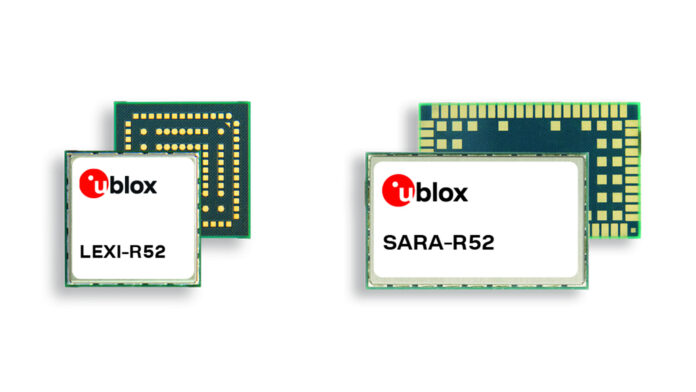Swiss IoT module maker u-blox has announced two new LTE-M cellular module series, the SARA-R52 and LEXI-R52, designed for industrial IoT applications. Both are based on its UBX-R5 cellular chip and integrate GNSS positioning. The firm is pitching them for monitoring and tracking applications in the utilities and logistics markets, as well as in the healthcare sector.
The R52 series introduces a new “combo module” to offer simultaneous GNSS and LTE-M connectivity – described as “important for applications requiring continuous or cyclic tracking”. The SARA-R520M10 has an integrated GNSS receiver (M10) for “concurrent low-power tracking, better time-to-first-fix (TTFF), and improved radio (RF) sensitivity,” the company said. “It is tailored for users who [want a] pre-integrated cellular and GNSS solution,” it added.
The LEXI-R52 provides the same features as the SARA-R52, but in a smaller form factor (16x16x2 mm) – “ideal for ultra-small applications like wearables”.
A bunch of new features in the UBX-R52 chip have been flagged, also, intended to dispense with additional componentry and reduce the footprint and costs associated with IoT development. The GNSS positioning feature, called SpotNow, provides a 10-metre fix on an IoT device within a “couple of seconds”. “It is meant for occasional tracking applications such as recycling waste dumpsters, elderly trackers, or cleaning machines,” said u-blox.
Besides, u-blox has a compute processing unit (‘uCPU’) that allows users to run their own software within the chip without using an external microcontroller unit (MCU). The firm’s connection manager (uSCM) software is designed for “automatic connectivity management [for] either best performance or lowest power consumption” – in the event a connection drops, for example, it said.
The R52 series offers 23 dBm of RF output power, compared to 20-21 dBm in most LTE-M modules. “This ensures stable connectivity in challenging coverage conditions.” Samples are available now; volume production is expected in the third quarter.

